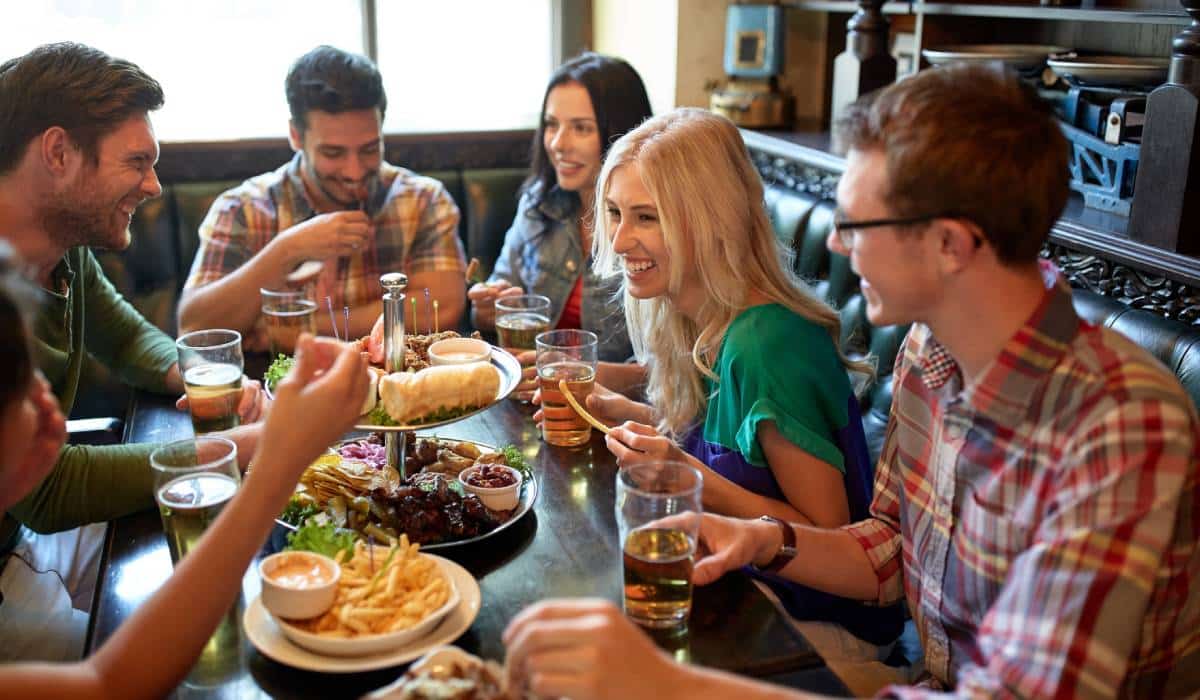COVID-19 changed the world in innumerable ways. For the quick service restaurant industry, many companies are still strategizing on how to adjust to the “new normal.” One of the topics still up in the air is the restaurant’s dining room: Is it still relevant, needed, or even safe in a post-pandemic world?
The conversation around the need for dining rooms started pre-pandemic, with technological advancements and consumer behavioral changes giving rise to curbside pickup, delivery, and more efficient drive thru. Once COVID hit, dining rooms across the country closed to limit exposure and protect employees and customers alike. With the new dilemmas of surging inflation and staff shortages, the fate of the dining room seems more precarious than ever. And yet, from a societal perspective, the need for dining rooms is perhaps greater than it ever has been before.
Dining rooms play a vital role in our society and communities, and to close them is to lose social connection and the progression of ideas.
Restaurant dining rooms are more than a place to sit and eat; they provide an important “third place” in society. While the first and second places are your home and workplace, the third place is an easily accessible public gathering place that sociologists consider “central to local democracy and community vitality.”
For much of modern history, restaurants have existed as a neutral ground where anyone can gather. Conversation and an exchange of ideas happen here between people from all walks of life. Historians attribute English coffeehouses as a major driving force of the Enlightenment in the 17th and 18th centuries. Coffeehouses had the same effect in the American colonies as a place where thinkers and revolutionaries met to discuss their ideas and dreams for a future monarchy-free state.
In the 21st century, restaurants continue to play that critical role. Quick-service dining rooms are where retirees connect and church groups gather after services. It’s where business people go for a quick meeting. It’s where sports teams, Scout troops and middle schools hold their fundraisers. In short, it’s where community bonds are strengthened.
It’s also where customer loyalty can be strengthened. At all the restaurants that had an impact in my life, I was a regular. I knew many of the staff and had my order fully dialed in. If I needed to meet someone or host an event, odds are we’d meet at one of these restaurants. That place was our place, and we were customers for years and years.
And practically speaking, the dining room also strengthens a restaurant’s quality assurance. Food delivery options are improving and have fundamentally changed the world, but even quick delivery times and advancements in food packaging aren’t enough to wrap up that premium “hot and fresh from our kitchen” effect (I’m looking at you, curly fries).
The next time you’re in the dining room, take a look around and drink in the social connection happening around you. You may see the local soccer team celebrating a win, old college friends reconnecting for the first time in a decade, new moms getting out of the house for a much- needed break, or a non-profit hosting a fundraiser. It’ll remind you that it is indeed a beautiful, meaningful, human thing to sit down together for a meal.
The 2020s have included upheaval, change, adaptation, and loss. But as long as it remains safe for employees and diners, we shouldn’t let dining rooms disappear. Perhaps more than ever, our society needs that critical third place to connect, communicate, and share.
Steven Cook is the co-founder of Force4Good Fundraising, an online SaaS that lets quick service restaurants easily coordinate fundraisers for local community organizations. More at force4good.com.













